Similar presentations:
1-Lecture Introduction to Philosophy9 -
1.
Lecture – 1• INTRODUCTION TO PHILOSOPHY
• Culture of thinking.
• Philosophy
• PhD
Yerkin Massanov
2. The brief content:
• 1. The term of “philosophy” ;• 2. Three historical types of outlook;
3. The role of Ph-y in human live.
3.
FUNCTIONS OF PH-Y IN EACH PERIODS:The ancient oriental Philosophy – mythology;
The Ph-y of ancient Greece, Rome – rational;
Medieval Ph-y – Religious;
The ph-y of Renaissance –Enlightenments;
The New Age Ph-y – Epistemology;
German classical ph-hy – Systematic;
Philosophy of the 19th century – Irrationalism;
Philosophy of the 20th century – Existentialism
Present-day Philosophy– Analytical.
4.
Historical types of outlook:mythology, religion, philosophy
World outlook is a system of
views on the reality and human’s
place in it in a certain historiccultural epoch.
5. SUBJECT OF PH-Y
Ontology – study of being
Gnoseology – theory of cognition
Epistemology - study of knowledge
Philosophical anthropology – study of man
Social philosophy – philosophy of society
Aesthetics – study of the beauty
Logic – study of thinking
Futurology – study of the future
Axiology – study of values
Ethics – study of morality
6. Practical part of Philosophy?
The skills are:Critical thinking,
Argument skills,
Communication,
Reasoning,
Analysis,
Problem solving…
7.
The term “philosophy” comesfrom the Greek language. It
consists of two words :
philos, (love, or philia –
friendship, affection) and
sophos (learned scholar, sage, or
sophia - wisdom, knowledge,
talent).
8.
A brief etymologicalinterpretation sounds
like
- “love wisdom”
- interesting in
science
9. The main terms:
• Philosophy: love or pursuit of wisdom; asystem wide knowledge, object;
• Philosopher: thinker who believed in the
power of the human mind, subject;
• Metaphysics: means “what comes after
physics” studying spiritual fundamental cause
of life;
• Physics – which is defined by Aristotle as a
“sensible substance” or real materialistic
world
10. Keys for understanding of Philosophy
Synonyms for Philosophy –
science.
Ph-y - through combination
all subjects describing world
(Picture of world).
11.
The first who usedthis word, was
Pythagoras.
He did not dare to call
himself as wise man, in
his view: it is only God is
wise, there’s only God’s
wisdom.
12.
• Socrates - absolute truth exists withineveryone Socratic method;
• Plato - government should be divided
into three groups, ruled by philosopherkings; men and women should have
equal education and employment;
• Aristotle - “golden mean”; use senses to
make observations like a scientist;
analyzed governments and decided that
the best was a mixture of government by
a few and democracy
13. 3. “World as a text” - Jacques Derrida
• Text – invented beforewriting, its history is deeply
and meaning is very widely.
• Symbols could give more
objectively knowledge the
one book text.
• That is mean we can
through semiology to make
innovation of traditional or
classical knowledge.
14. Charles Peirce – Lingo semiology
• 1. Symbols of icons – texts whichdescribes objects directly;
• 2. Symbols of index – inderect sign
of other objects (symbols of street);
• 3. Symbols of semiology – signs which
gives deeply information about
tradition or religion of people. For
example: Flag of Kazakhstan
15. Astana city – as hypertext (combination of symbols with widely meaning)
16. “Bayterek” – as a text
- According mythology“Samryk” putted eggs for
its safety in highest place.
- This historical symbols
have widely meaning.
- Tree symbolize – past,
now and future.
- White color – means,
pure, right way, honor
relations etc.
17. Astana Pyramids - Palace of Peace and Reconciliation
- The Pyramid was speciallyconstructed to host the
Congress of Leaders of
World and Traditional
Religions. It contains
accommodations for
different religions:
Judaism, Islam,
Christianity, Buddhism,
Hinduism, Daoism and
other faiths.
18. In Conclusion
Philosophy:
- cross disciplinary subject;
- fundamental methodology of all science;
- modern day Ph-y actual in area
existentialism, lingo-semiology and
analytical etc.
19. №1 Seminar:
• №1 Seminar:• 1. Find 3 definition of Philosophy and
according this describe 4th own?
• 2. What are main differences
philosophy as a subject?
• 3. How could You use Ph-y in your
future profession?
20. One of the main role of Modern Ph-y Orientation function:
1. Existentialism – Logotherapy:helping to solve ontological question
(responsibility, freedom, spirit);
2. Socialization – Kaizen: one of the best
management planning for self
realization in capitalist society.
21.
Self-studies Week-1.Essay for discussion
(2-3 pages):
Are philosophy a science or an
art? Neither or both of them?
Internet recourse: https://beyondtheflock.wordpress.com/2009/05/09/philosophyas-science-art
https://www.quora.com/Is-philosophy-an-art-or-a-science-And-why-do-universities-award-anMA-in-Philosophy-and-not-an-MSc
3. http://www.differencebetween.net/miscellaneous/career-education/difference-betweenscience-and-philosophy/
https://www.reddit.com/r/askphilosophy/comments/58ummi/is_philosophy_art_or_science_or
_neither/
https://beyondtheflock.wordpress.com/2009/05/09/philosophy-as-science-art/
22.
Self-studies IWST Week-2.Essay for discussion
(2-3 pages):
What is of meaning life?
Viktor Frankl: “Man's
Search for Meaning”.
23.
Self-studies IWST Week-3.Report
(4-5 pages):
Philosophy of Kaizen?
Make a plan through
application “Trello” to life and
Your create Personal Philosophy
(Practical skills)?
Masaaki Imai: “Kaizen”.
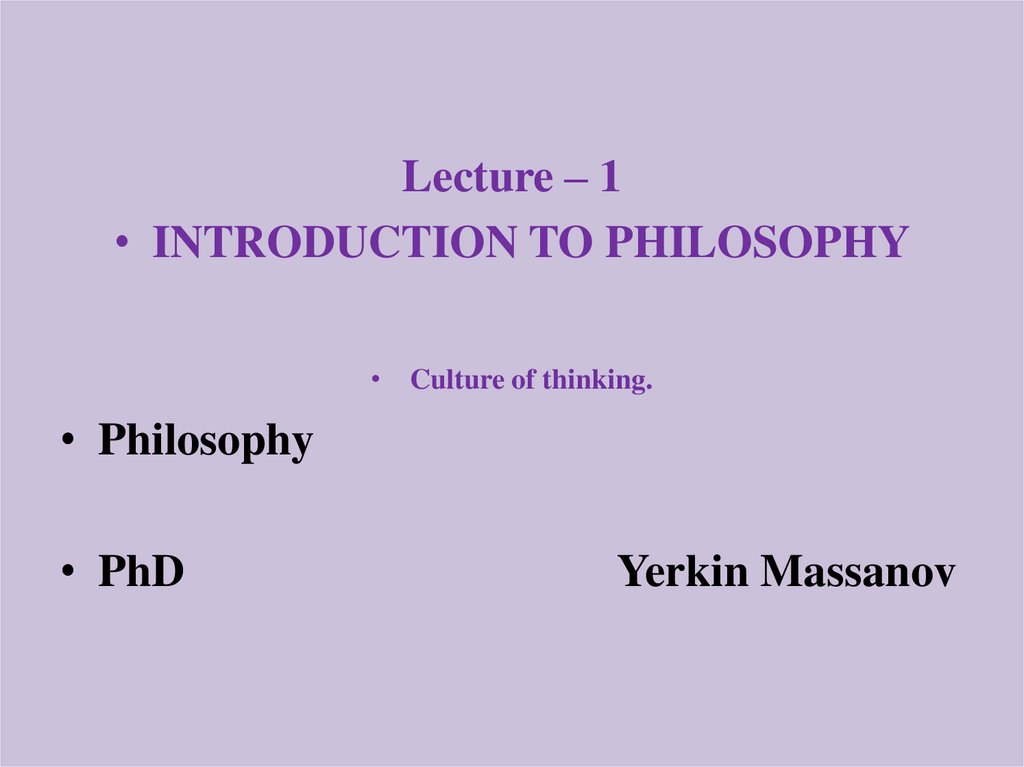














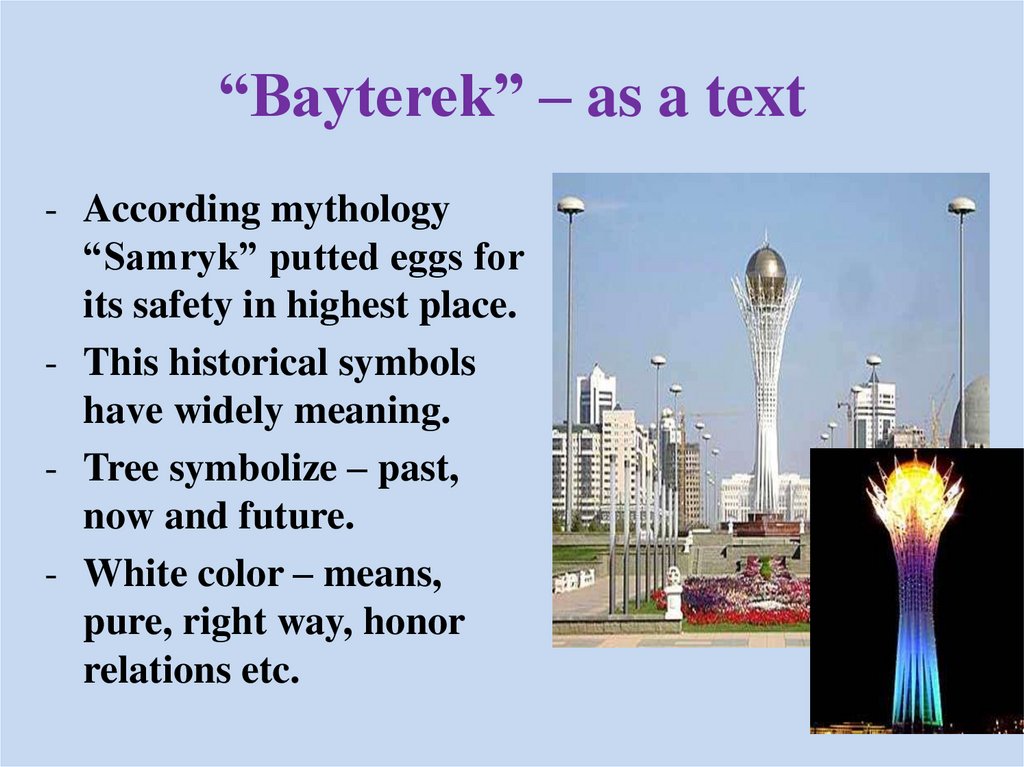

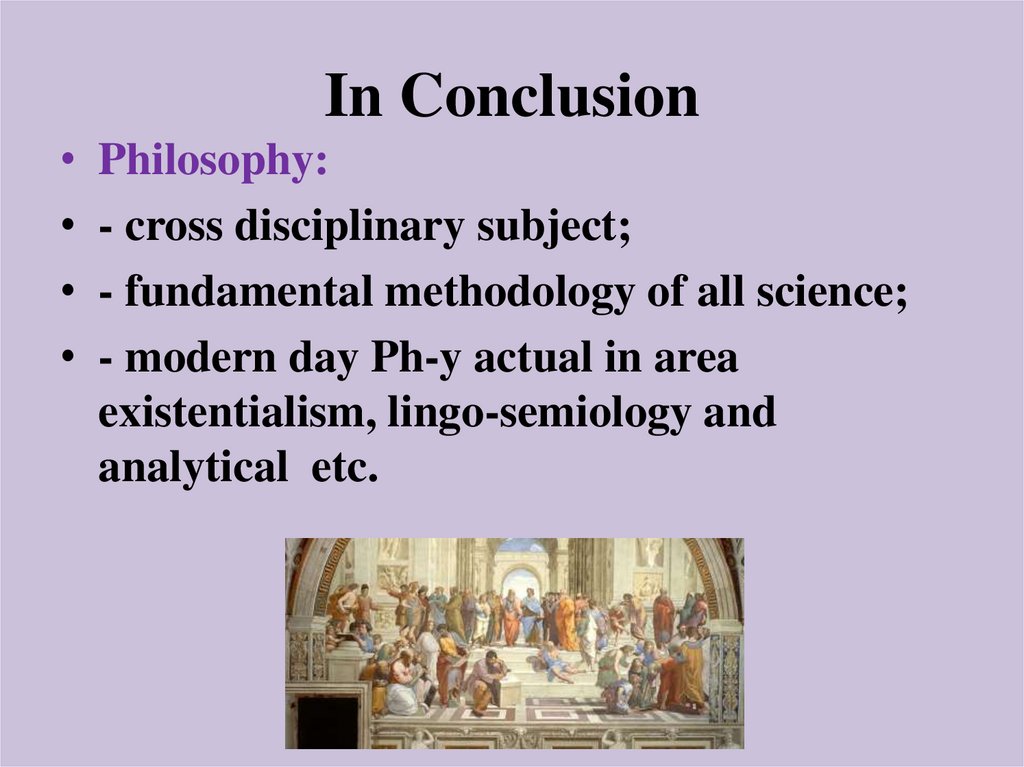
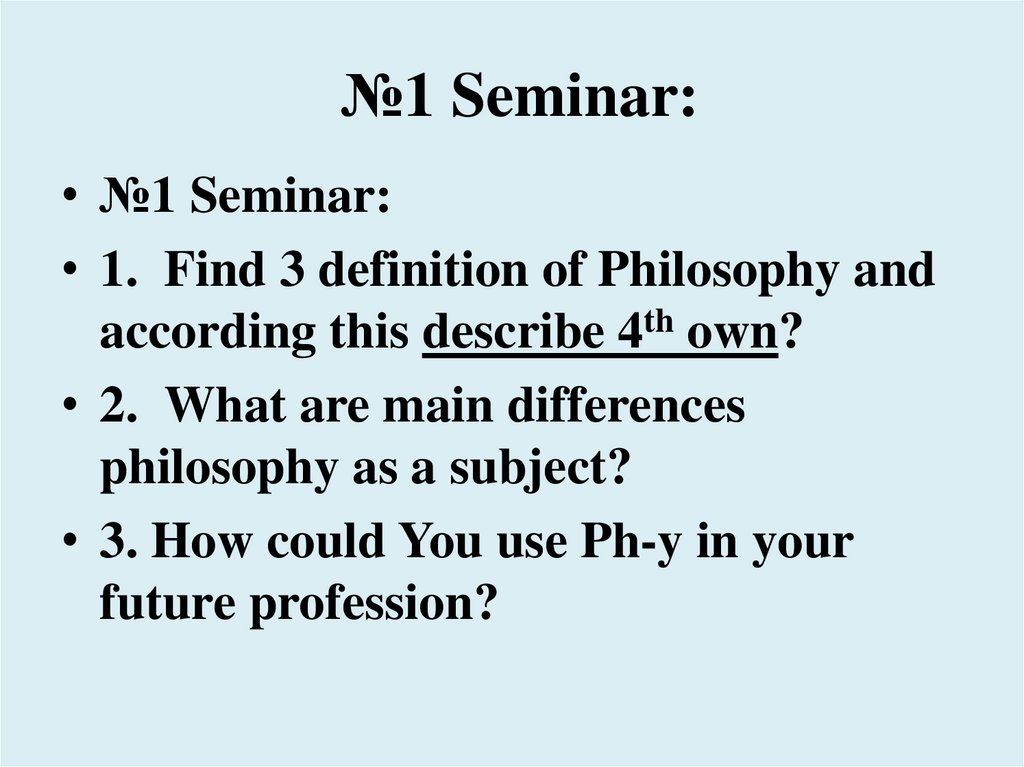
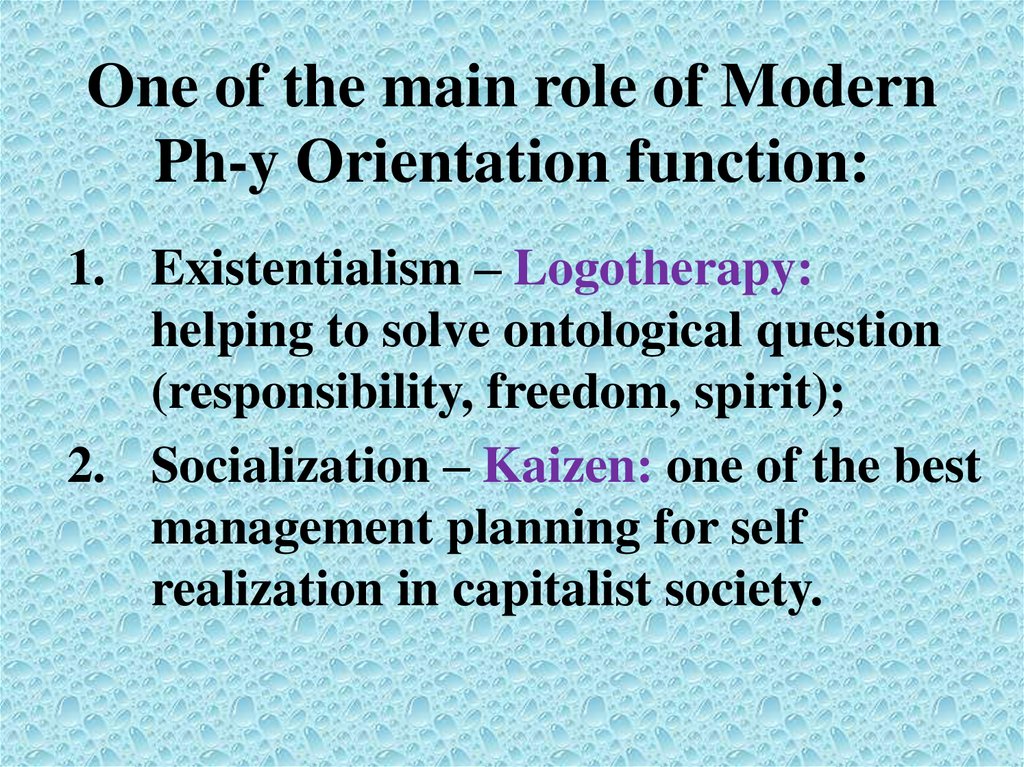
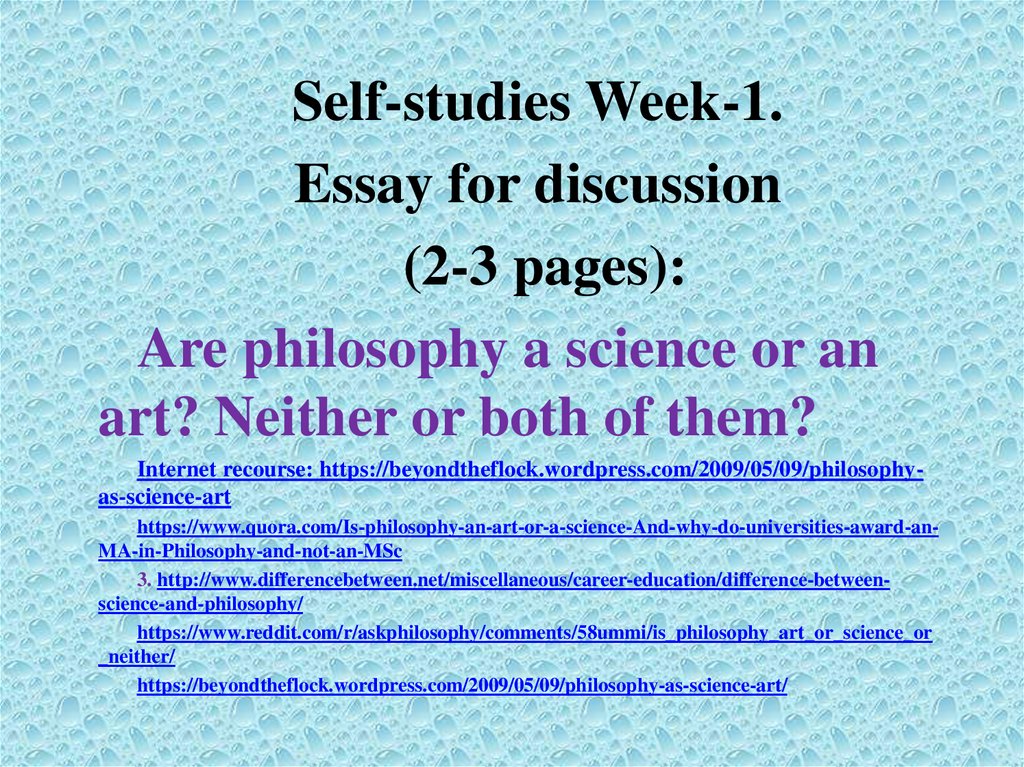
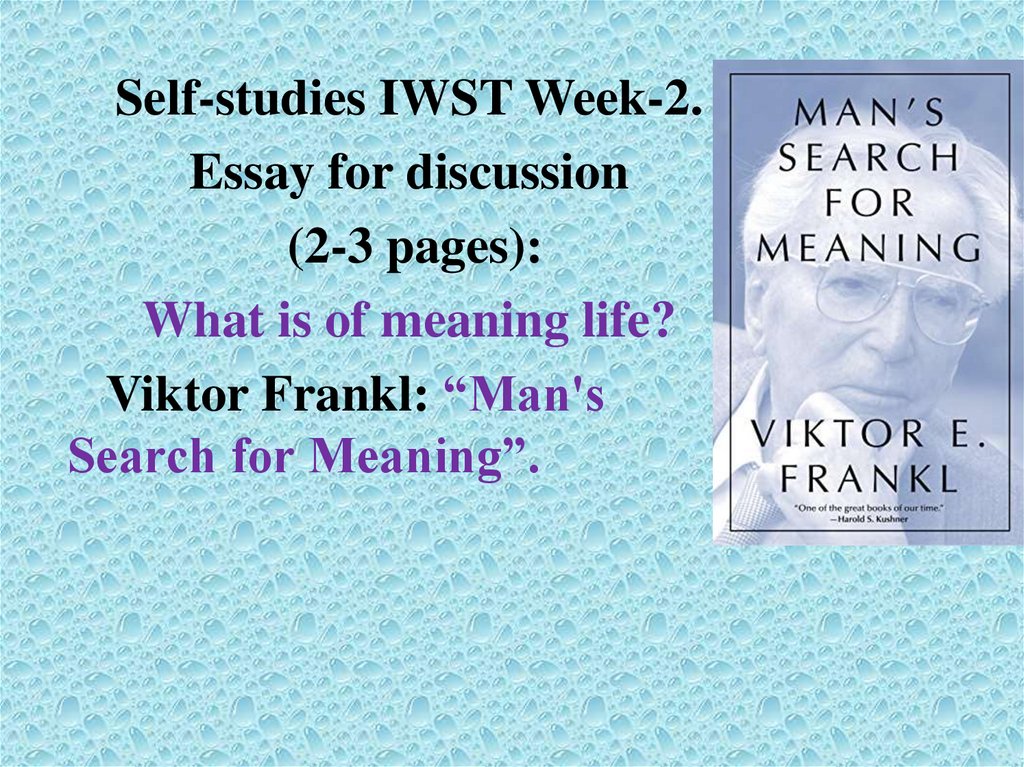
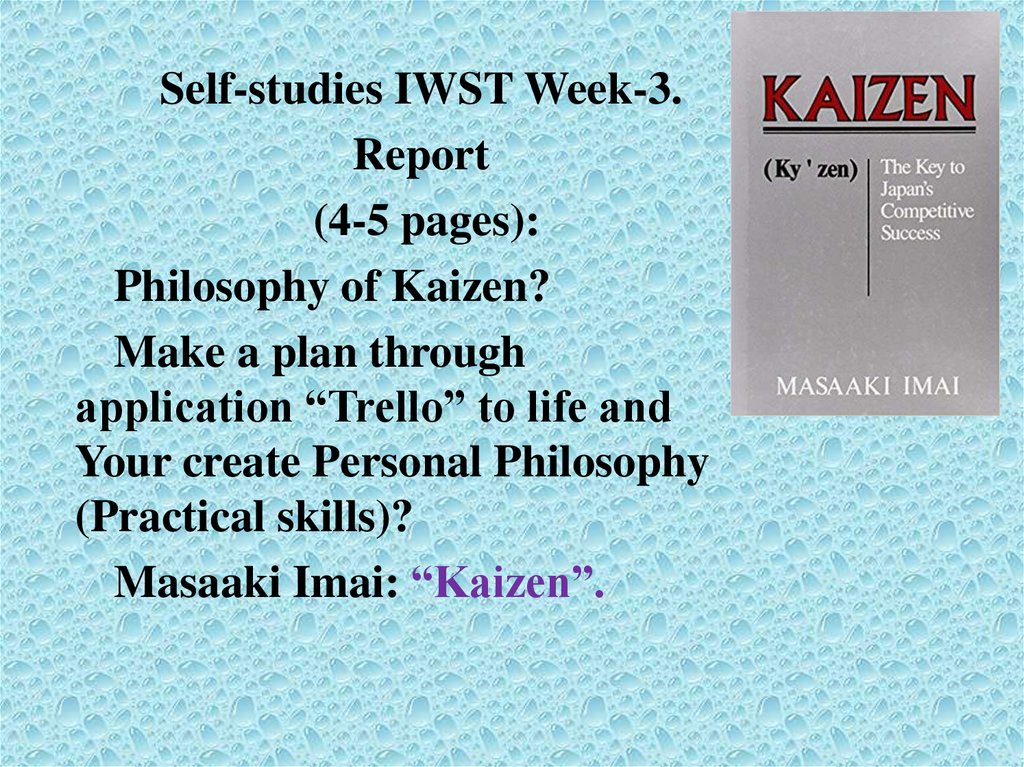
 philosophy
philosophy








